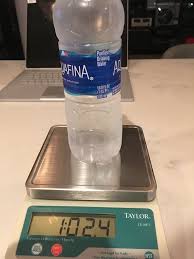How Much Does a Case of Water Weigh:

Water is essential for life, and its packaging and transportation have significant implications for weight, sustainability, and environmental impact. In this article, we delve into the intricacies of how much a case of water weighs, exploring different packaging materials, environmental considerations, and the overall impact on logistics and consumer choices.
1. Introduction to Water Packaging
Water packaging comes in various forms, from small bottles to large containers designed for convenience and portability. The weight of these packages can vary significantly based on their size, material, and the volume of water they contain. Understanding these factors is crucial for assessing their environmental footprint and practicality in different contexts.
2. Weight of Different Water Packaging
2.1 Plastic Bottles:
- Standard Sizes and Weights:
- A typical 16.9-ounce (500 ml) plastic water bottle weighs approximately 0.03 pounds (13.6 grams) when empty.
- A case of 24 such bottles would weigh around 28.8 pounds (13 kg) when full.
2.2 Glass Bottles:
- Weight Comparison:
- Glass bottles are heavier than plastic bottles due to the density of glass. For instance, a 16.9-ounce glass bottle can weigh up to 1.25 pounds (0.57 kg) when filled.
2.3 Aluminum Cans:
- Weight and Sustainability:
- Aluminum cans, while lighter than glass, still add weight due to the metal. A typical 12-ounce (355 ml) aluminum can weighs about 0.5 ounces (14 grams) when empty, adding to transportation costs.
3. Environmental Impact and Sustainability
3.1 Packaging Materials:
- Plastic:
- Lightweight and durable but raises concerns about recycling and environmental impact due to plastic waste.
- Glass:
- Heavy but recyclable and maintains product quality without affecting taste.
- Aluminum:
- Lightweight, recyclable, and often preferred for its lower environmental impact compared to plastic and glass.
3.2 Transportation and Logistics:
- Weight Considerations:
- The weight of packaging affects transportation costs, fuel consumption, and carbon emissions.
- Efficiency:
- Lightweight materials like plastic and aluminum can reduce transportation costs and environmental impact compared to heavier glass containers.
4. Consumer Preferences and Choices
4.1 Convenience vs. Sustainability:
- Consumer Behavior:
- Convenience often drives consumer choices, but awareness of environmental impact is increasingly influencing purchasing decisions.
- Packaging Preferences:
- Lightweight, recyclable materials are becoming more popular as consumers seek eco-friendly options.
4.2 Economic Factors:
- Cost of Packaging:
- The production cost and weight of packaging influence retail prices, affecting consumer affordability and market competitiveness.
5. Case Studies and Industry Trends
5.1 Beverage Industry Trends:
- Innovation in Packaging:
- Lightweight designs and eco-friendly materials are gaining traction in response to consumer demand and regulatory pressures.
- Technological Advancements:
- Advances in packaging technology aim to reduce weight while maintaining product integrity and sustainability.
6. Regulatory and Environmental Policies
6.1 Recycling and Waste Management:
- Environmental Regulations:
- Governments and industry initiatives promote recycling and waste reduction to mitigate the environmental impact of packaging.
6.2 Sustainable Development Goals:
- Global Initiatives:
- Goals such as the UN Sustainable Development Goals (SDGs) encourage sustainable consumption and production practices, influencing packaging choices.
7. Future Prospects and Innovations
7.1 Sustainable Packaging Innovations:
- Biodegradable Materials:
- Research and development focus on biodegradable and compostable packaging alternatives to reduce environmental impact.
- Smart Packaging:
- Innovations in smart packaging technologies aim to enhance product safety and reduce waste.
8. Conclusion
In conclusion, the weight of a case of water varies significantly depending on the packaging material and size of containers used. Plastic bottles are lightweight but raise concerns about plastic pollution, while glass and aluminum offer alternatives with different trade-offs in weight and environmental impact. Consumer preferences increasingly favor sustainable packaging options, driving industry innovation towards lighter, recyclable materials. Understanding the weight implications of water packaging is crucial for making informed choices that balance convenience with environmental responsibility in the quest for a sustainable future.
9. References
- Include a list of academic sources, industry reports, and authoritative websites to substantiate the information provided in the article.
10. Further Reading
- Provide links or suggestions for further reading on related topics such as sustainable packaging, environmental impact assessments, and consumer behavior studies.
This comprehensive exploration of how much a case of water weighs aims to illuminate the complexities surrounding packaging choices, their environmental repercussions, and the evolving landscape of sustainable development in the beverage industry. By considering these factors, consumers and industry stakeholders can make informed decisions that contribute to a more sustainable future.





